It’s no secret that cleaning up after cooking can be a pain. One of the worst offenders is your enamel cookware, which will often develop a white film on the outside and sometimes brown stains that won’t go away even with scrubbing.
To learn the simple tips for how to clean discolored enamel cookware, keep reading!
The most important thing to remember is not to use anything too abrasive or scratch the surface of your cookware, as this will make it worse in the long run.
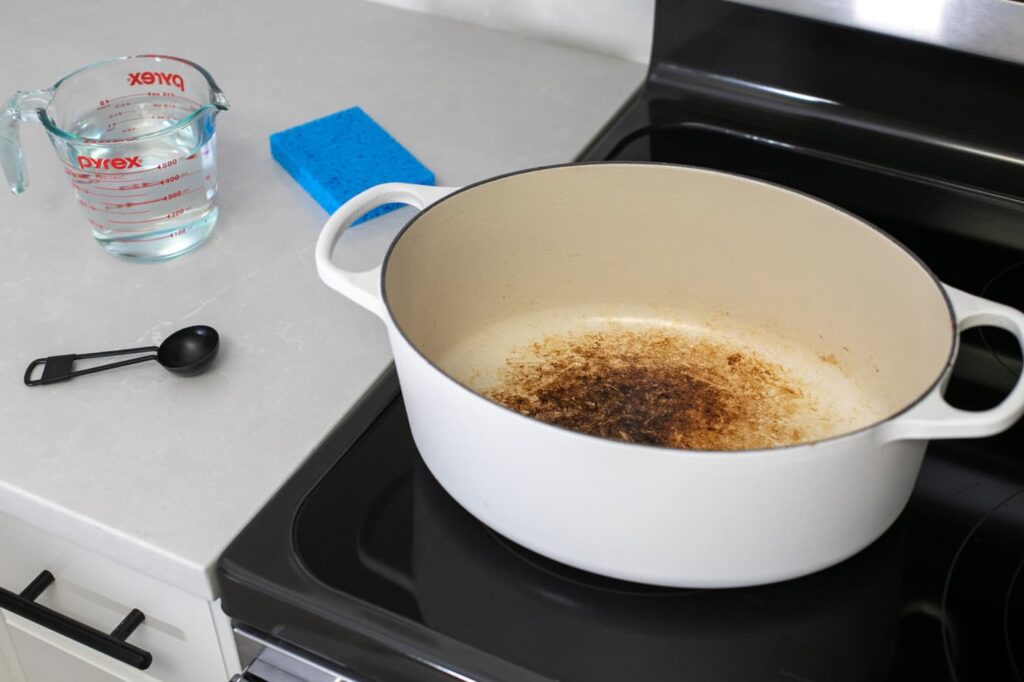
How to clean discolored enamel cookware?
The reason for discolored spots on enameled cookware is the cooking oil. If the cookware is not maintained correctly, it will probably rust over time. This is because the cooking oil oxidizes faster in this type of cookware than in non-enameled pans.
Another cause of discoloration is the temperature of the cookware; if heated above average, the enamel will become brittle and shatter.
Scrubbing
Clean discolored enamel cookware by scrubbing it with a soft sponge, dish soap, and water. Apply even pressure while scrubbing small amounts of soapy water onto the stained area.
Rinse, dry, and then apply cooking oil to your cookware to bring it back to the more brightly colored original condition.
We recommend that you use old newspapers to clean and dry your cookware instead of cleaning them with a paper towel or plain kitchen towel, which can make unpleasant-looking stains on the surfaces of the cleaned items.
Baking soda
Baking soda is an excellent, inexpensive household cleaner that can remove tough stains on surfaces like your enameled cookware. To clean discolored cookware with baking soda, you must make a paste by combining water and baking soda.
Apply the paste liberally to the stained area, sit for about five minutes, and scrub it with a sponge or cloth dipped in warm water and dish soap. Rinse off any remaining residue after scrubbing and drying as usual.
The result? Cleaner cookware!
Abrasive cleanser
Cleaning by using the abrasive cleanser, such as baking soda and salt, will probably have the best outcome. The grit will scratch off the surface discoloration of burnt-on material.
This is generally a very unpleasant task because it involves scrubbing and scraping until your fingers bleed. It requires a fair bit of elbow grease, but you can count on getting good results from this method, especially when combined with some gentle cleaning gloves for extra protection against callus buildup and itchiness.
Well, that was terrifying; if you’re brave enough to try it!
Including abrasive cleansers like baking soda and salt is not common for many people lately because abrasives are usually considered harsh roughness.
Laundry detergent
Enamel cookware can become stained from using it on some types of foods and in particular conditions. The top product to use to clean them is a laundry detergent containing bleach or chlorine.
Apply a quart of boiling water with 1/2 cup of laundry detergent to the stain. Allow dishwasher detergent to sit for about 30 minutes and then rinse it off with cool water.
Lemon juice and salt
If you are using cookware that has discolored enamel, there is a simple solution. All you need to do is add some lemon juice and salt into the dented area. Leave it for about ten minutes and then scrub with soap and water as usual.
Your dishware will be sparkling clean in no time!
Avoid extreme temperature changes
Clean enamel cookware by filling it with hot water, scrubbing with steel wool or an abrasive sponge, and then leaving a kettle full of boiling water to bring the pot up to temperature gradually.
Never use any harsh cleaners or solvents on enamel pots and pans.
Avoid using excessive heat when cleaning burned foods from them because even the conditions which can remove these sorts of stains will also affect the integrity of the glazing seal that protects your cookware from food’s noxious substances in cooking.
Protect the enamel from scratching
If your cookware is beginning to appear dingy or has a white film over its surface, it’s time to polish. To start with a clean slate and restore the natural beauty of your enamelware, use these 3 steps:
First, place enough water in the base of an enamelware pot or pan large enough for all pieces you want to clean.
Add 2 tablespoons of baking soda followed by a few drops of dish soap and stir with your hand until the solution reaches a bubbly foam.
Bring this mixture to boil on the stovetop or outside if you’re cooking over an open fire. Maintain a gentle rolling boil while washing each item, then rub off any residue as quickly as possible after boiling.
Keep your enameled cookware clean
use light abrasive cleaners (i.e., Bon Ami) to clean stubborn spots;
- use Bar Keepers Friend or Comet for heavy scrubbing, be sure not to get any on the inside of the pan;
- make a paste out of baking soda and water; apply this to stained areas with a sponge. Allow it to sit for 10 minutes before rinsing with water; you might need to repeat this process if food stains remain;
- soak dirty pans in hot soapy water mixed with vinegar for about 30 minutes;
- then rinse thoroughly; this will remove burnt on side dishes.
It is best to keep your enamel kitchenware clean. To do so, be sure that you are storing them properly. It is recommended that you not store enameled cookware stacked on one another overnight.
This will help ensure that they don’t find any food residue or chemical buildup and get carried onto the surface of other cooking pans when taken off the stovetop.
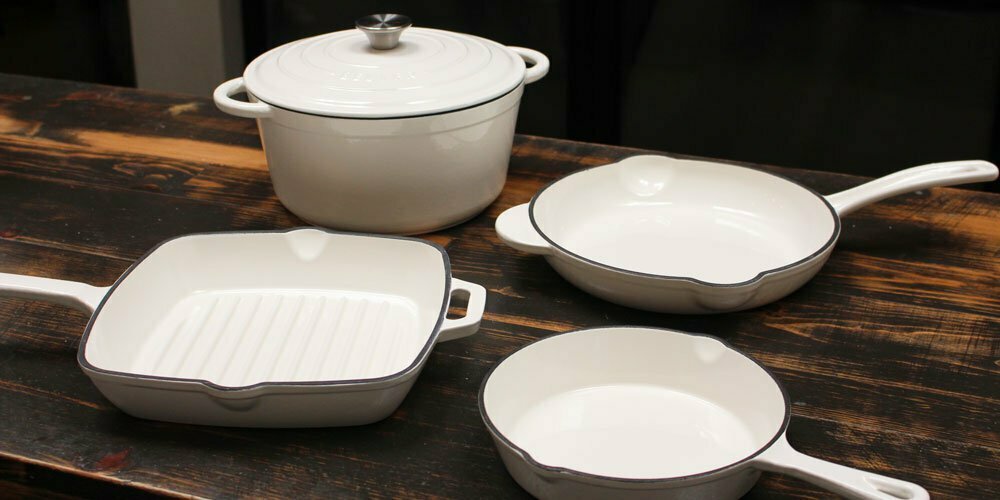
How to clean enamel cookware?
To clean enamel cookware, use a paste of baking powder and water. Wipe the paste over the surface of your cooking pot or other utensils, scrubbing with an old brush until all debris is gone.
Rinse the mixture off with a wet cloth dipped in hot water mixed with vinegar or lemon juice. Dry thoroughly so that no moisture remains before putting away, or it will rust!
How to remove stains from enamel cookware?
There are three ways:
- soak the cookware for a few hours in a solution of 10 parts water, 1 part laundry detergent or baking soda;
- scrub off the stain using an abrasive powder like coarse salt, baking soda or whiting with soap as needed;
- use acetone.
The most important thing to remember when removing stains from enameled cookware is not to be too harsh on it. Those who have problems taking care of their enamel cookware often don’t know how easy it can be.
All that’s required is a little patience and some know-how about which products to use and which techniques work best.
How to repair chipped enamel cookware?
If your cookware is damaged, like the enamel on a pot or pan, there are several methods you can try to repair it. (We recommend patching instead of complete restoration).
Here’s how to do it:
1. Follow your enamel chips with the fingertip until you find where they meet. Press firmly but gently to push one chip up against the other and seal them together.
This will take some patience and may require more than one attempt, especially if any bits of chipped enamel has come loose in the meantime!
2. Turn the stove off when food is ready (or let bubbles subside). Pour cold water into the chipped area for a few minutes, then pour out again without stirring.
How to clean enamel cast iron cookware?
The best way to clean enameled cast iron cookware is with a scrub brush and some hot water. Don’t use soap; it will strip the protective coating that you want on the cookware.
If there are adamant stains, soak in hot water overnight and let sit while you’re at work. You may need to repeat a couple of times, but eventually, those pesky stains will disappear.
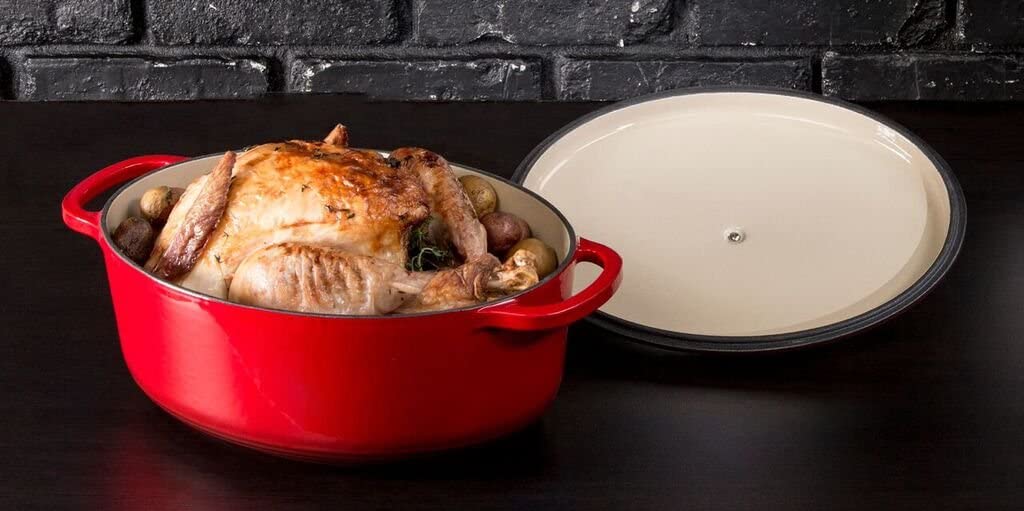
Final words
This blog post has covered the most effective ways to clean discolored enamel cookware and make it look new again.
When it comes to cleaning enamel cookware, you may be tempted to toss everything in the dishwasher. But this can lead to more problems than benefits. Dishwashers use a lot of water and soap that won’t do much for removing stains or discoloration from enamel-coated pots and pans.
A better option is using a paste made out of baking soda mixed with enough hydrogen peroxide (3% solution) until it resembles toothpaste consistency.
Once you’ve created a thick paste, apply it evenly over the surface of the pot or pan and let sit for about 15 minutes before scrubbing off any remaining dirt using an old rag dipped in soapy water.
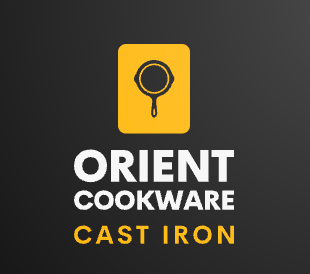
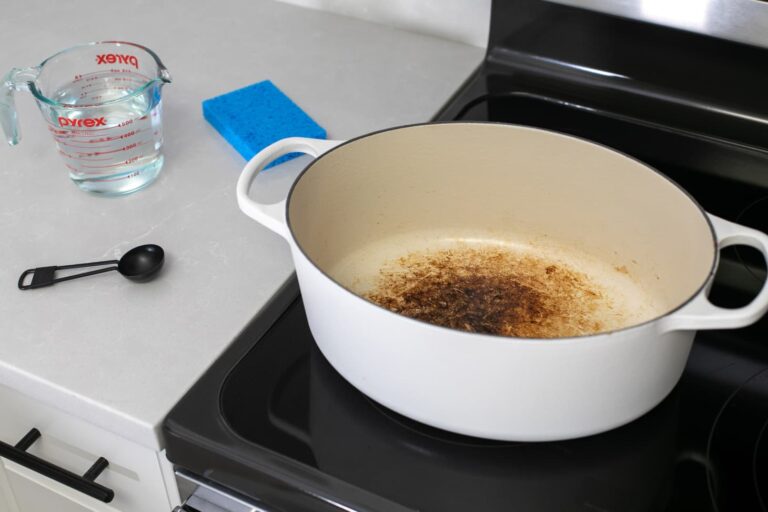

2 Responses
I need to to thank you for this very good read!! I certainly loved every little bit of it. I have you book-marked to check out new things you postÖ
You need to take part in a contest for one of the most useful blogs on the web. I most certainly will recommend this website!